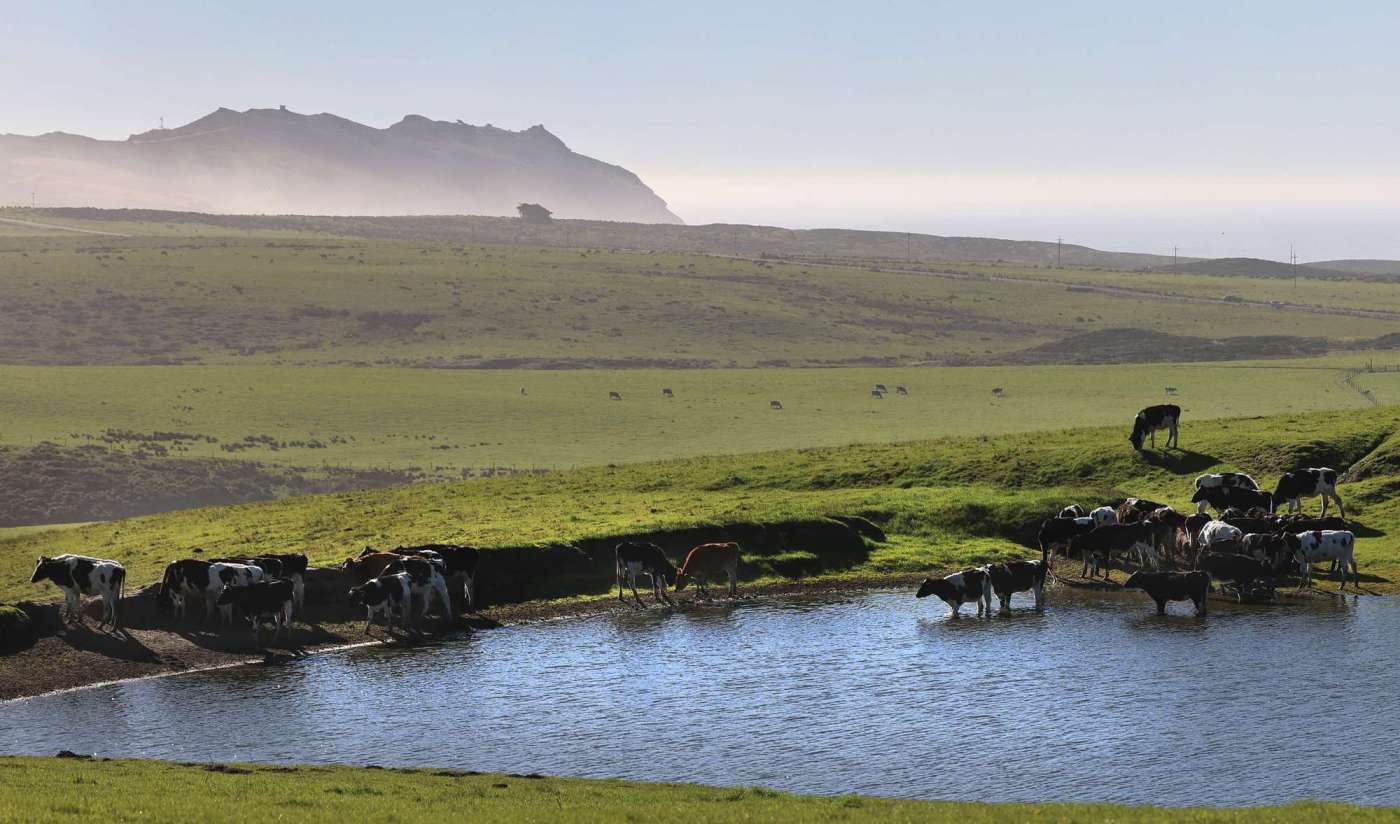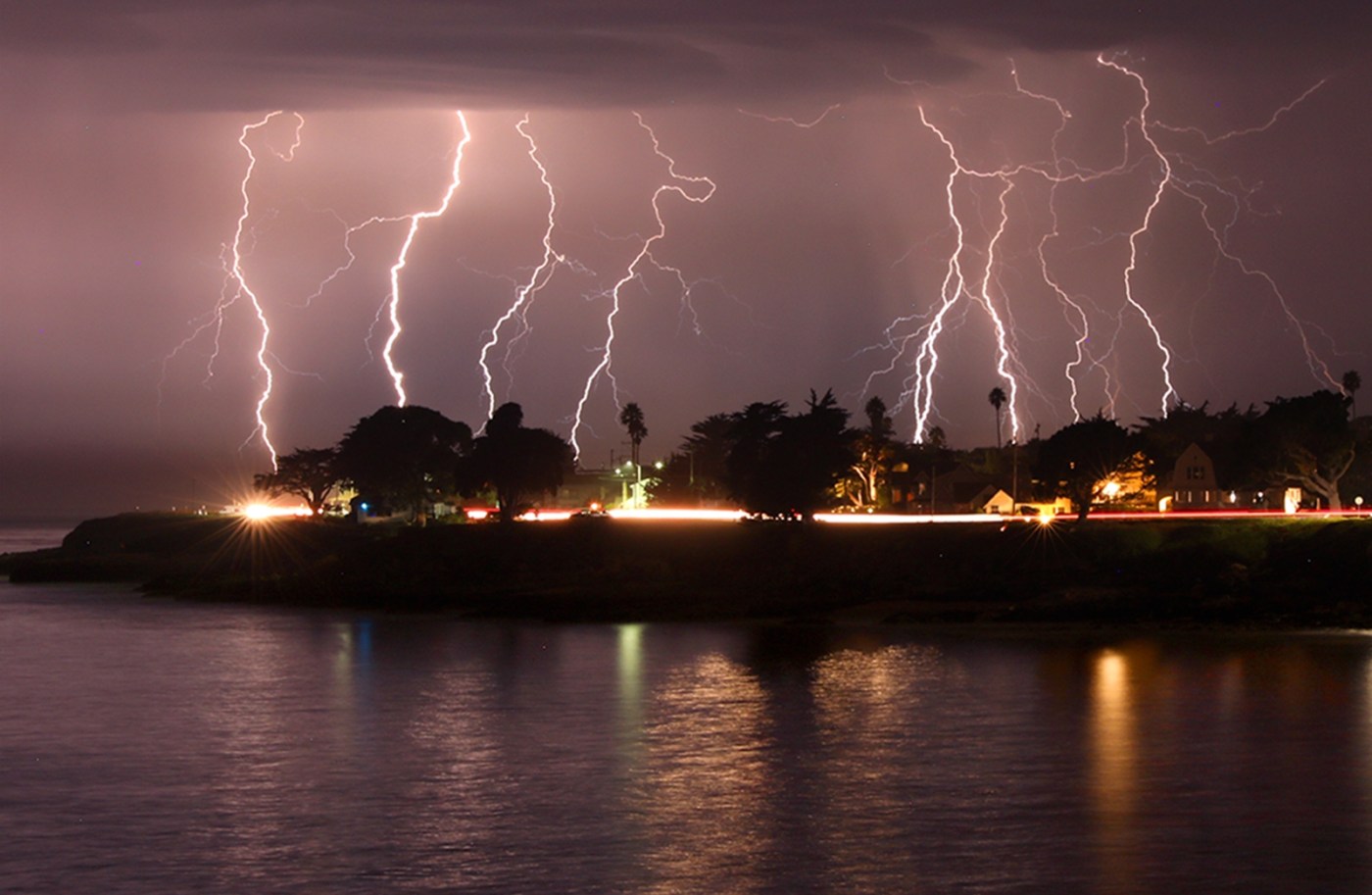It was a small blip in the blizzard of recent news about the future of Point Reyes National Seashore.
A California agency that finances habitat improvement projects approved $10 million in late August for restoration of land that’s set to be vacated by seashore ranchers under a historic settlement announced this year in the final days of the Biden administration.
The grant is going to The Nature Conservancy, the same group that brokered the closed-door talks with ranchers and spearheaded a reported $30-million-plus package accepted by a dozen of those families to exit the seashore – and end years of litigation by environmental groups critical of the ecological impact of private farming in the public park.
The first $2.7 million from the Wildlife Conservation Board is set to be used by The Nature Conservancy, a global giant in land protection and resource restoration, “to modernize the fencing and water infrastructure,” and make other changes on the roughly 16,700 acres, where the involved ranches are shutting down by next spring.
Grazing is set to continue there, but under a lighter footprint geared to promote improved water quality and wildlife habitat, according to Nature Conservancy and state officials.
Somewhat lost in the discussion of those ground-level details, however, is the story about how the state came to commit millions of dollars in taxpayer money to management of a federal park – and how the group lined up to receive that money, The Nature Conservancy, lobbied for it long before finalizing the deal with most seashore ranchers to exit the park.
Related Articles
10 great national parks to explore in Canada
From slavery to pollution, National Park employees flagged material deemed ‘disparaging’ to US
Bay Area officials, historians rally to protect national parks amid federal cuts
Here’s what to know if you encounter a snake in the Bay Area
Ranger fired for hanging transgender flag in Yosemite and park visitors may face prosecution
Jennifer Norris, executive director of the Wildlife Conservation Board, which is issuing the first of several installments to The Nature Conservancy, said that while using state funding in a national park happens infrequently, it has occurred before in Yosemite and other national parks in California.
The $10 million was appropriated and added to the state budget in June 2024 – six months before The Nature Conservancy and other parties signed off on the landmark deal that includes paying ranchers more than $30 million, raised from private donors, to shut down their farms and leave the leased land.
RELATED: Niman Ranch founders sue US over Point Reyes land deal
In effect, state funding was already set aside to restore land that ranchers had not agreed to vacate. Some are asking now whether it could instead have been tapped at the outset to resolve management issues targeted by environmentalists and keep farms operating in the park.
“It’s shocking to me,” said rancher Kevin Lunny.
Along with other Point Reyes dairy and cattle ranchers, he said he had no idea back in June 2024, in the middle of intense negotiations, that The Nature Conservancy was lined up for millions in state money to restore lands farmed for generations by their families.
“All I know is when they appropriated this money, it was far from being settled,” said Lunny, who accused The Nature Conservancy of “hiding their hand.”
He has received a multimillion-dollar payment from the group after vacating his ranch and moving to Auburn in May. He is still involved in talks between ranchers, The Nature Conservancy and the seashore, as a past president of the Point Reyes Seashore Ranchers Association.
The Nature Conservancy entered the longstanding fray in Point Reyes as a highly-regarded kind of peacemaker – brought in at the behest of Rep. Jared Huffman and others in 2022 to seek a more permanent resolution to the battles that several environmental groups have waged for a decade to curtail or end ranching in the seashore.
Lead representatives of The Nature Conservancy and some of its donors have told The Press Democrat it was committed by fall 2023 to a far-reaching settlement involving some compensation for ranchers willing to exit.
But behind the scenes, the group was also lining up state funding to stake future restoration work in the park, something it did not widely share at the time.
“I recall when (the bid for state funding) was being put together, we didn’t have assurance that there would be a settlement,” said Michael Bell, protection strategy director at The Nature Conservancy, who played a lead role in the Point Reyes deal. “And so that was one of the questions I remember folks asking us, ‘What if it doesn’t happen? And we said, ‘Well it’s a huge place with all kinds of conservation restoration needs. There’s plenty of work to be advanced out there, sort of regardless of outcome.’ It’s just more optimal if we were able to reach this settlement.”
Michael Bell, the Nature Conservancy’s protection strategy director, gives a statement and answers questions during a community meeting at the Point Reyes Dance Palace, Saturday, Jan. 11, 2025. To Bell’s left is rancher Kevin Lunny, Marin County Supervisor Dennis Rodoni and Rep. Jared Huffman. (Kent Porter / The Press Democrat) Kent Porter / The Press Democrat
“I know (Rep. Jared) Huffman was a champion of it,” Bell said of the plans for state-funded restoration inside the federal park.
Rodd Kelsey, director of land programs at The Nature Conservancy, also described the San Rafael Democrat as a “champion of the project.”
Huffman’s staff said he was unavailable for comment
State earmark for federal park
The money in question came through Senate Bill 108, signed on June 29, 2024 by Gov. Gavin Newsom.
Under Section 106, Item 3640-101-0001, the amount of $10,200,000 was appropriated to the Wildlife Conservation Board. Of that money, $200,000 was targeted for studying wildlife corridors around the former Sonoma Developmental Center property in Glen Ellen – something that is described in great detail for several paragraphs.
But the money earmarked for the seashore simply reads, “Of the funds appropriated in this item, $10,000,000 shall be available for Point Reyes.”
Norris, the Wildlife Conservation Board director, said if the brokered deal to buy out ranchers had not been reached, they would have found other ways to spend the $10 million on Point Reyes.
“It would be used to fund other restoration at the seashore,” she said. “There’s plenty of work to be done, and we have funded other stuff, as we discussed at different national parks, so it wouldn’t go to waste. We would just use it in different ways than we’re using it now.”
But Lunny, the seashore rancher, wonders how that information – that there was $10 million in state funding, issued almost like a blank check for unspecified conservation and restoration work in the seashore – might have affected negotiations over a year ago had it been common knowledge.
“I think it would have been a key piece to discuss this with the people appropriating the money and asking how it could be used. Because, part of (the plaintiffs’) claims were air quality problems or water quality problems,” said Lunny. “If we could have used those dollars to address some of their concerns, that $10 million could go a long way with making improvements if somebody needed a manure separator and some fencing around riparian zones.”
Leading up to the funding approval in June 2024, Bell said there were likely talks involving staff or directly with California Senate President Mike McGuire of Healdsburg and Assembly member Damon Connolly of San Rafael. Point Reyes National Seashore falls in their districts.
Michael Mantell, a former California undersecretary for natural resources, also lobbied the current secretary, Wade Crowfoot, for Point Reyes funding.
Mantell, founder of the Sacramento-based Resources Legacy Fund, paid $30,000 to cover fees for Point Reyes parties to enter mediation in 2022 and donated $1 million to The Nature Conservancy’s buyout package. He was one of the first allies Huffman approached back in the spring of 2022, when he was encouraging all parties – plaintiff environmental groups, the park and intervening ranchers – to enter mediation.
“I did weigh in with Wade on the importance of some state funding for restoration since I want there to be sound restoration of these important resources and public access to them where appropriate and this is a solid use of state funds,” said Mantell.
Katie Talbot, acting deputy secretary for communications at the state natural resources agency, said Crowfoot was unavailable for comment, deferring to the Wildlife Conservation Board.
Next era for park’s pastureland
The settlement forged in secret – with all parties involved and even some on the sidelines like Huffman under non-disclosure agreements – was announced Jan. 6. The 12 participating ranches and dairies must vacate the land by March 2026, leaving only two ranches that were not part of the deal and are suing to overturn the seashore transformation.
A Republican-led committee in the House of Representatives also launched a sweeping investigation this summer into the settlement.
If it stands, The Nature Conservancy is set to lease the vacated grazing land, for up to 45 years, starting with a five-year lease option, followed by a 20-year lease offered by the park, with options to renew for two additional 10-year terms.
In addition to state funding for restoration on that acreage, The Nature Conservancy has also secured a $1 million from the U.S. Department of the Interior to “help with restoration,” said Bell.
The group is plotting out a grazing regime designed to “achieve ecological goals” and “to restore the natural native diversity of this landscape and address fire risk and climate resilience of the landscape,” Kelsey said.
Also, “research and monitoring will be implemented to understand how this landscape is responding to the targeted grazing and restoration,” he said.
Bell said hopes that private donations will eventually help fund more focused restoration projects down the road. “I definitely think that there is a philanthropic community that would like to get involved, and we’ve gotten signals of interest there from that philanthropic community, who hasn’t really been involved because the land was in private leases.”
Meanwhile, the exodus of ranchers and farmworkers at Point Reyes continues, with many uncertainties hanging over the West Marin community that is set to lose a significant share of its agricultural workforce and nearly a third of its dairies.
Lunny, one of the most vocal of the Point Reyes ranchers, said he is left to wonder why the ranchers were “once again the last to know” about the state funding for seashore restoration.
“When you pull back the curtain, you start to maybe understand a little bit more about what happened,” said Lunny. “Once this was approved, it should have been made known to everyone in mediation that there are two ways to use $10 million – one is if we leave, and one is if we don’t leave, and that didn’t happen.”
You can reach John Beck at [email protected].





